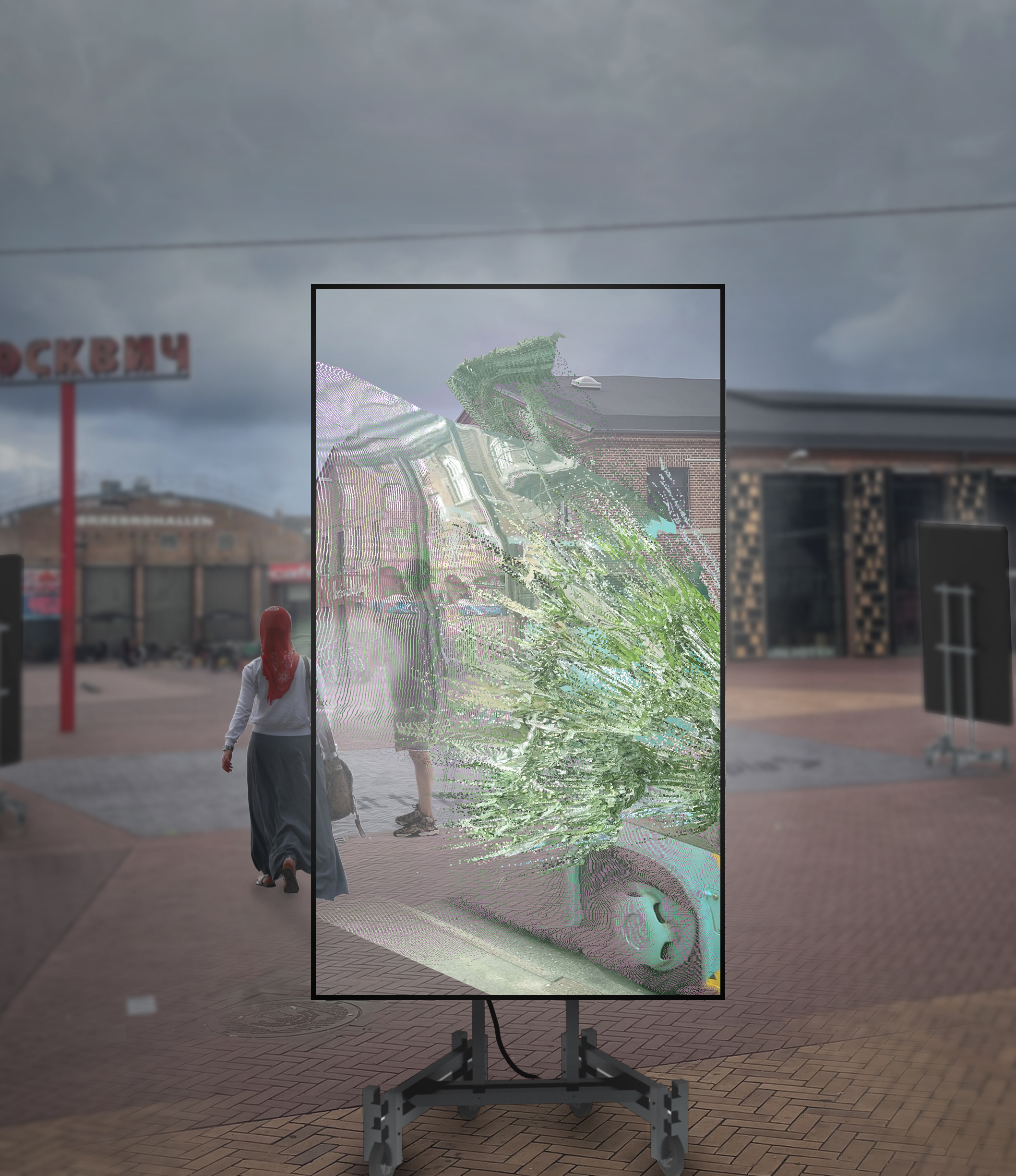Dynitikó

Visualization of the installation, Den Røde Plads
Monitors, cameras, LiDAR sensor
Monitors, cameras, LiDAR sensor
Copenhagen 2022
with Contextual Mumbling
Submission at Copenhagen Contemporary
︎︎︎Yet it moves
Quantum physics has brought a new perspective on the way we perceive the world around us. The quantum mechanical descrip- tion of reality is based on the concept of probabilities. Quantum superposition allows for a physical system to potentially be in many alternative states simultaneously, for instance a particle occupying many different positions at the same time. While sys- tems naturally exist in a superposition of states, it is the very act of observation that stochastically determines which of these states will be detected.
As humans, we all are part of a constantly flowing and intricately entangled complex of interactions that takes place in the different environments we move across in our daily lives. In this sense, our modern interconnected society, especially in the urban context, mimics the concept of quantum entanglement between the ob- server and the subject of observation. In a way, we can be thought of as rendering machines that collect information from the sur- rounding reality, while filtering and processing it through neural and psychological processes to then translate it to our world ex- perience.
Every species on this planet has different sensorial and cognitive processes. Analogously, contemporary documentation mediums each involve characteristic (specific) stages through which the information is elaborated, as it flows from the subject of observa- tion to the observer. We have new ways of remapping this aspect of human perception into corresponding digital spatial detection procedures, and exploring the concepts of potentiality and non-lo- calization.
with Contextual Mumbling
Submission at Copenhagen Contemporary
︎︎︎Yet it moves
Quantum physics has brought a new perspective on the way we perceive the world around us. The quantum mechanical descrip- tion of reality is based on the concept of probabilities. Quantum superposition allows for a physical system to potentially be in many alternative states simultaneously, for instance a particle occupying many different positions at the same time. While sys- tems naturally exist in a superposition of states, it is the very act of observation that stochastically determines which of these states will be detected.
As humans, we all are part of a constantly flowing and intricately entangled complex of interactions that takes place in the different environments we move across in our daily lives. In this sense, our modern interconnected society, especially in the urban context, mimics the concept of quantum entanglement between the ob- server and the subject of observation. In a way, we can be thought of as rendering machines that collect information from the sur- rounding reality, while filtering and processing it through neural and psychological processes to then translate it to our world ex- perience.
Every species on this planet has different sensorial and cognitive processes. Analogously, contemporary documentation mediums each involve characteristic (specific) stages through which the information is elaborated, as it flows from the subject of observa- tion to the observer. We have new ways of remapping this aspect of human perception into corresponding digital spatial detection procedures, and exploring the concepts of potentiality and non-lo- calization.

Installation diagram
![]()
